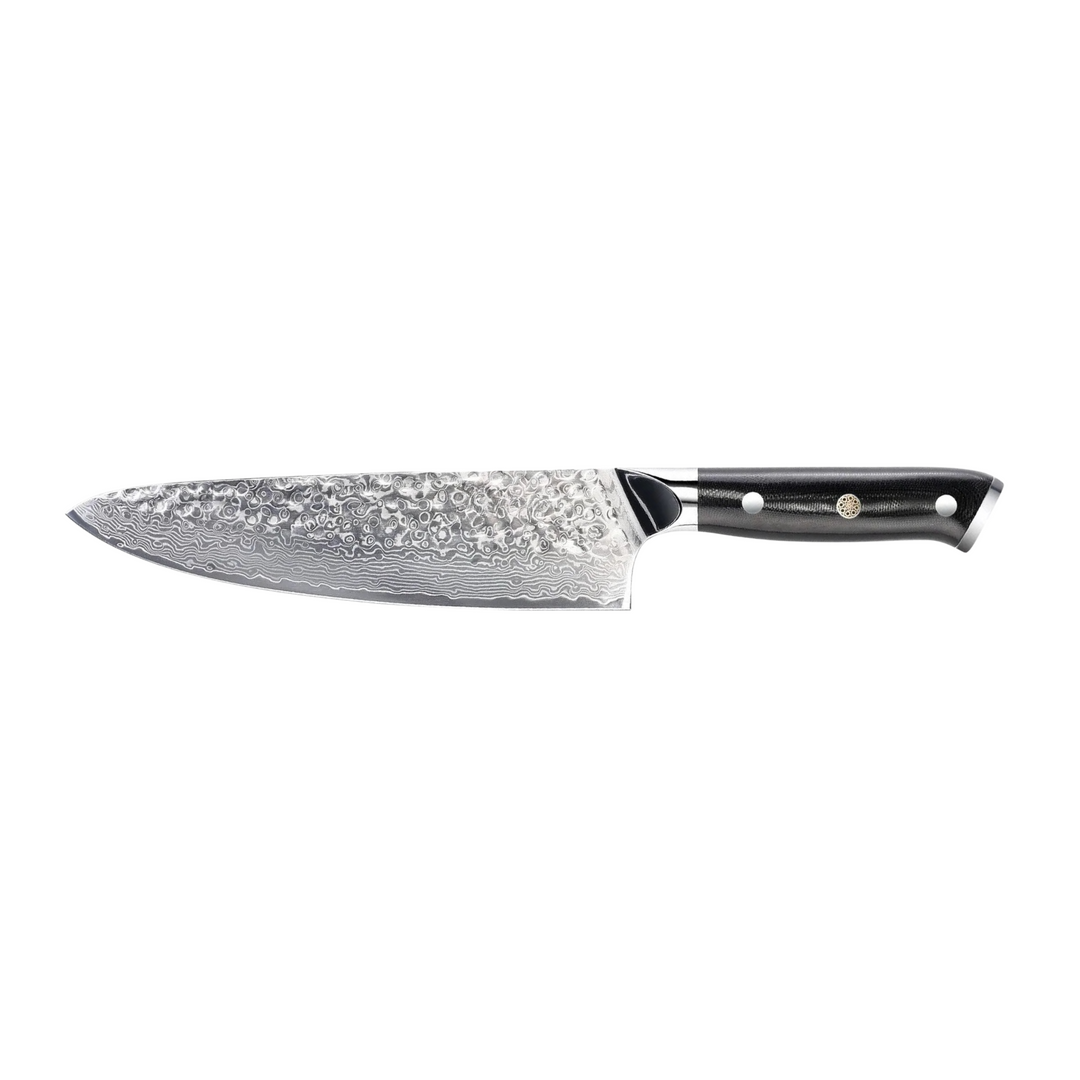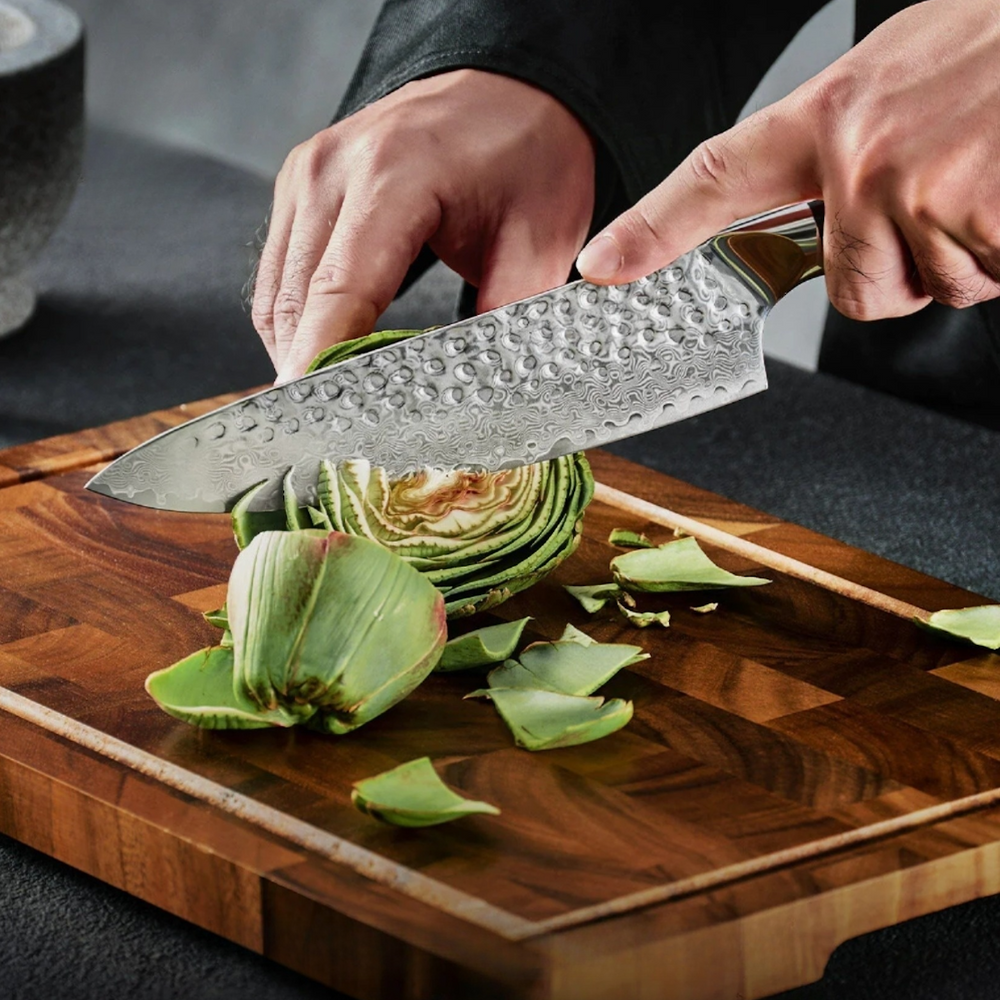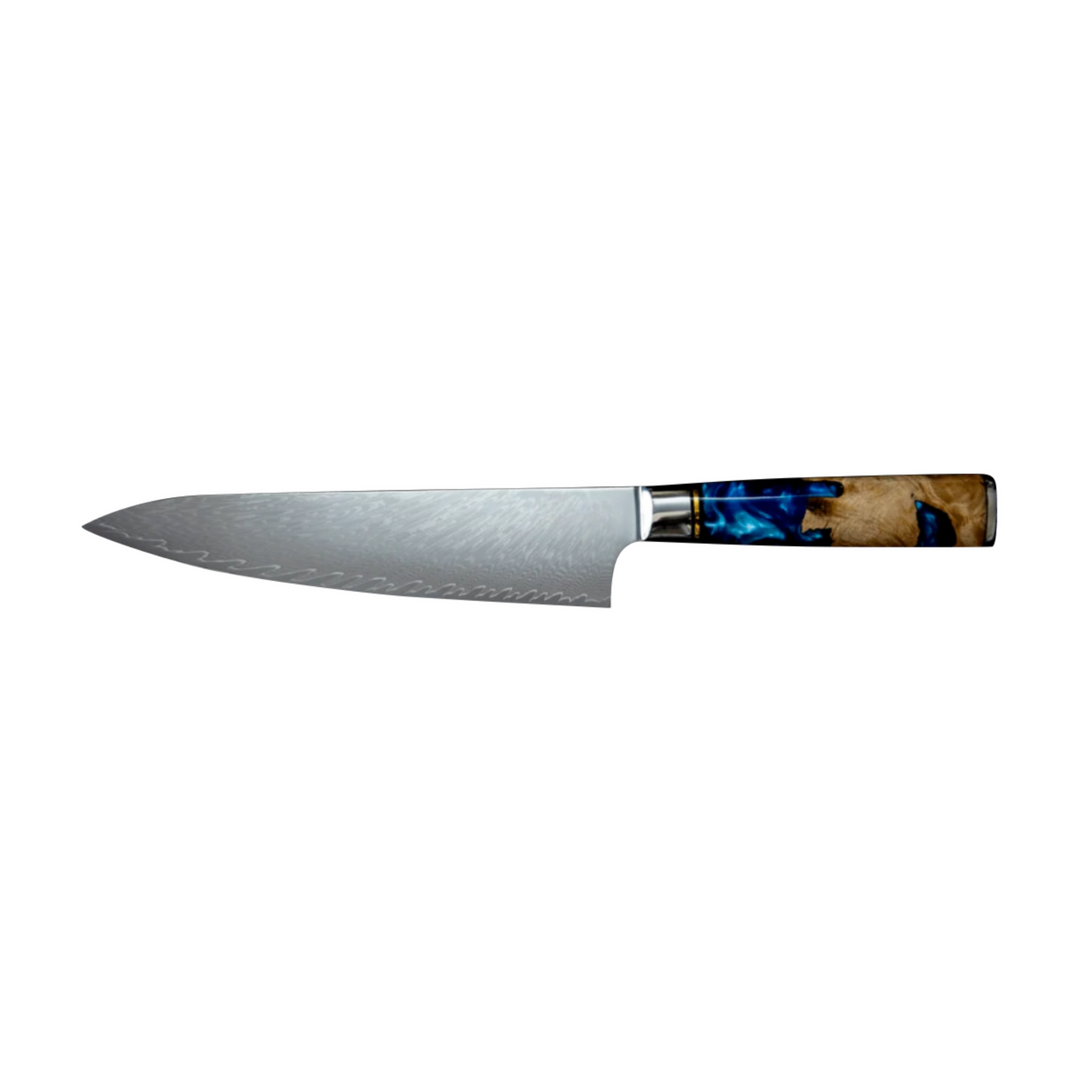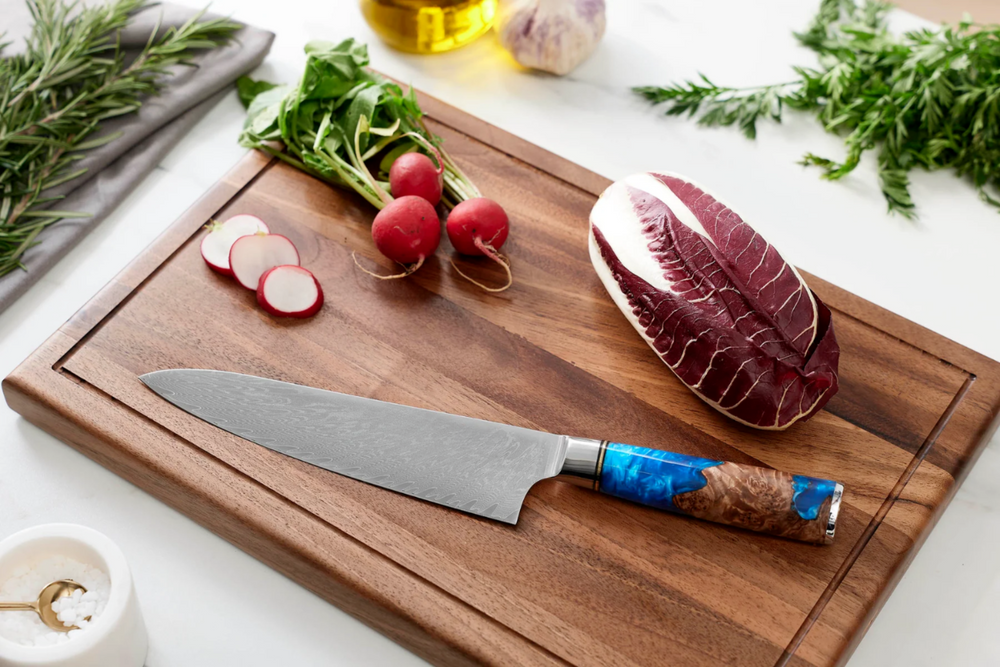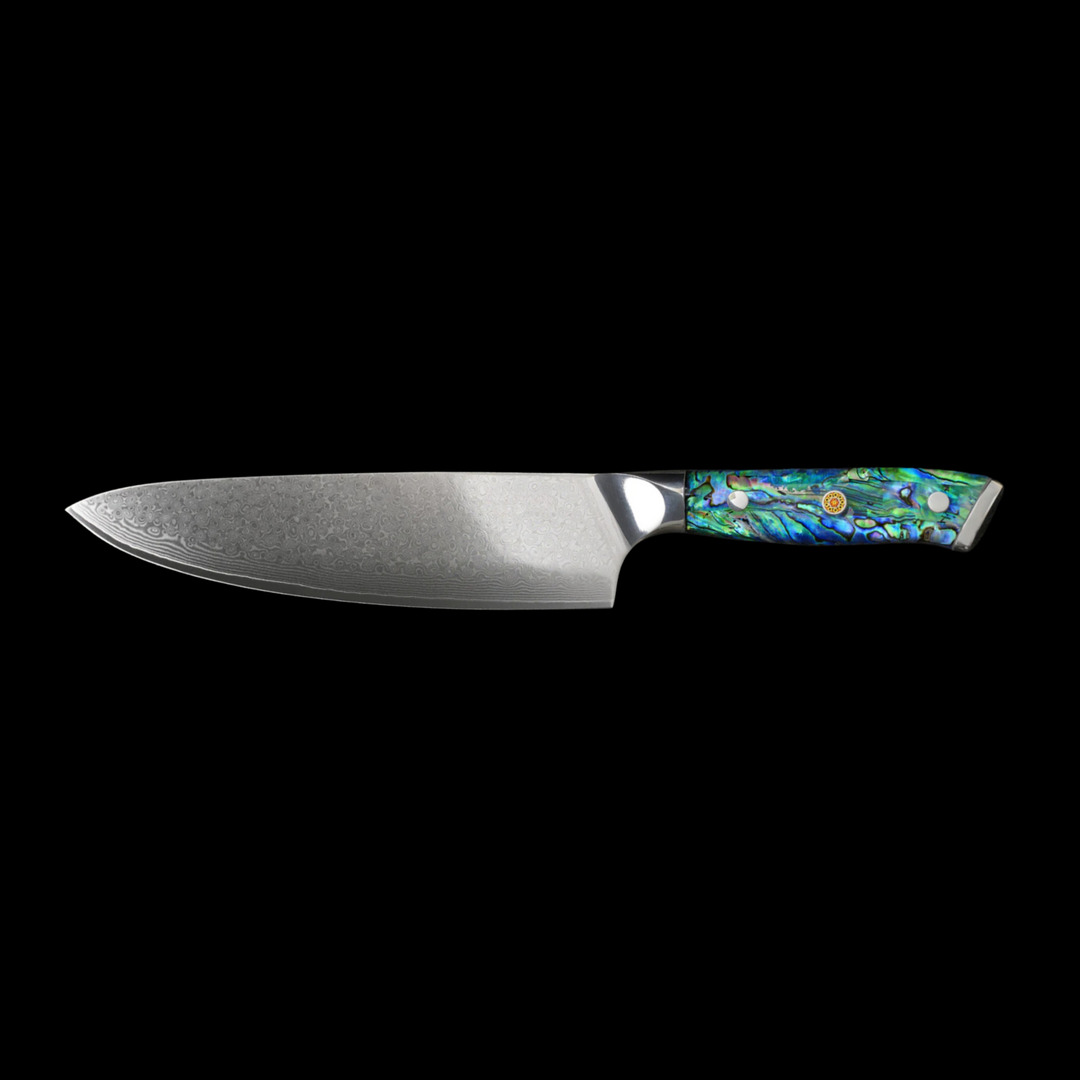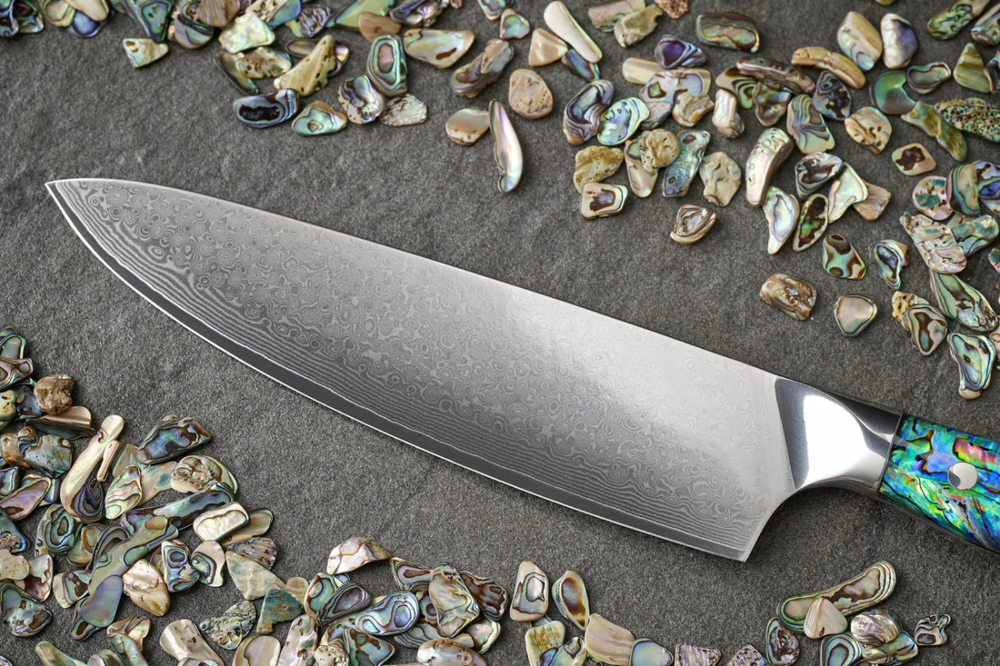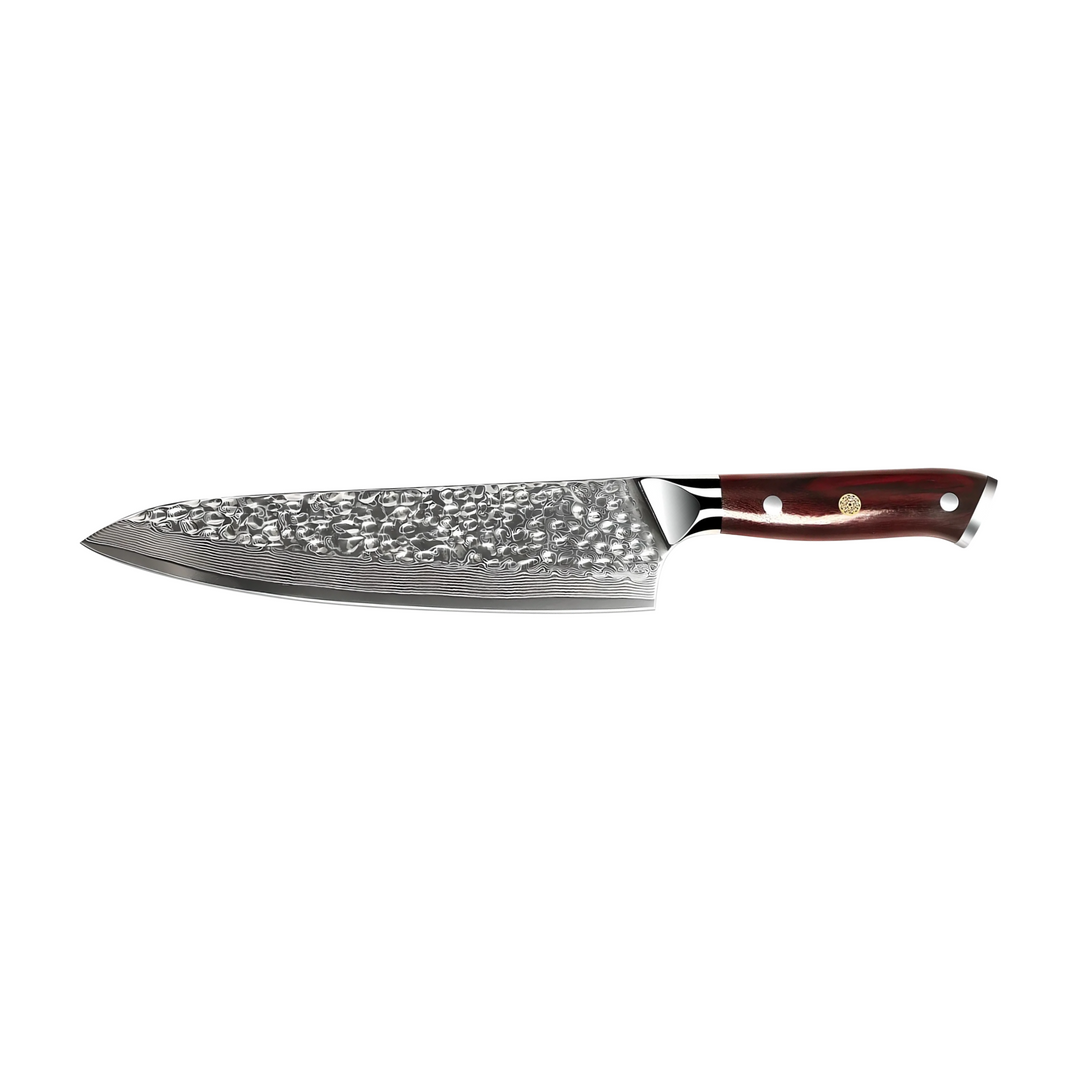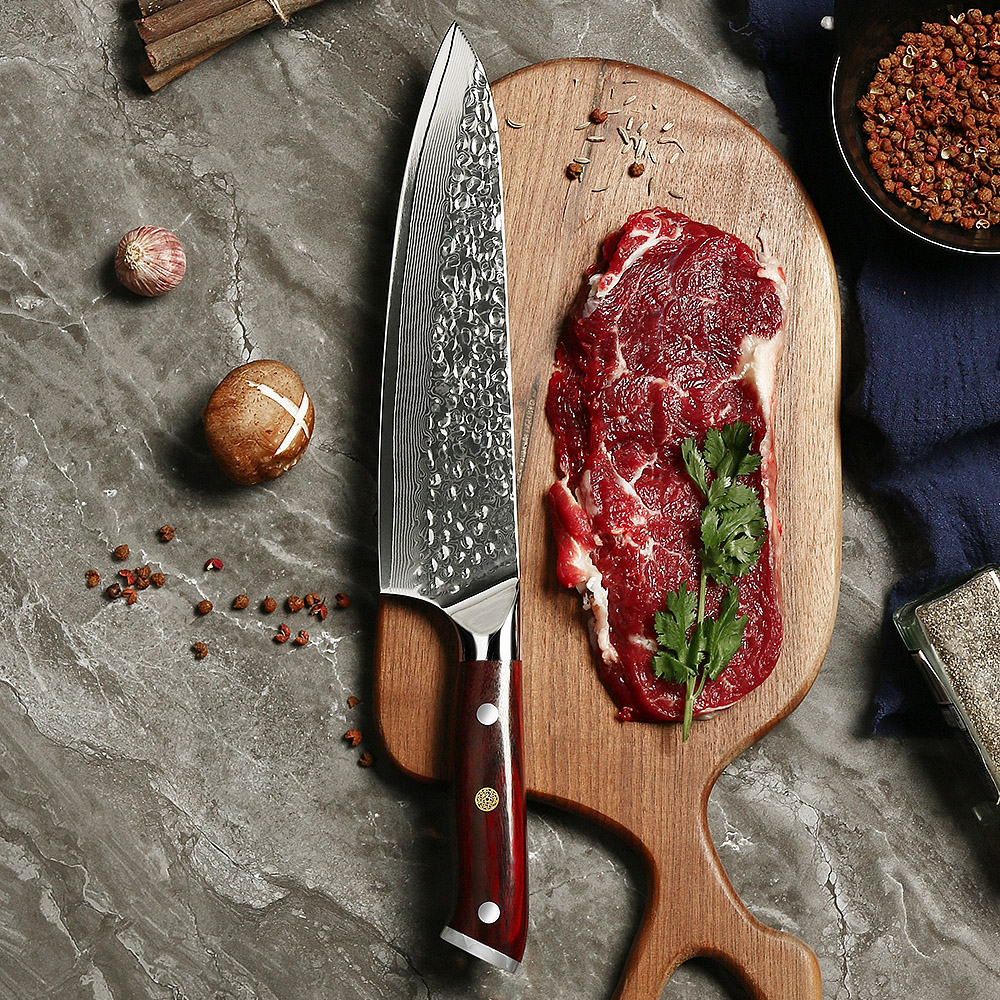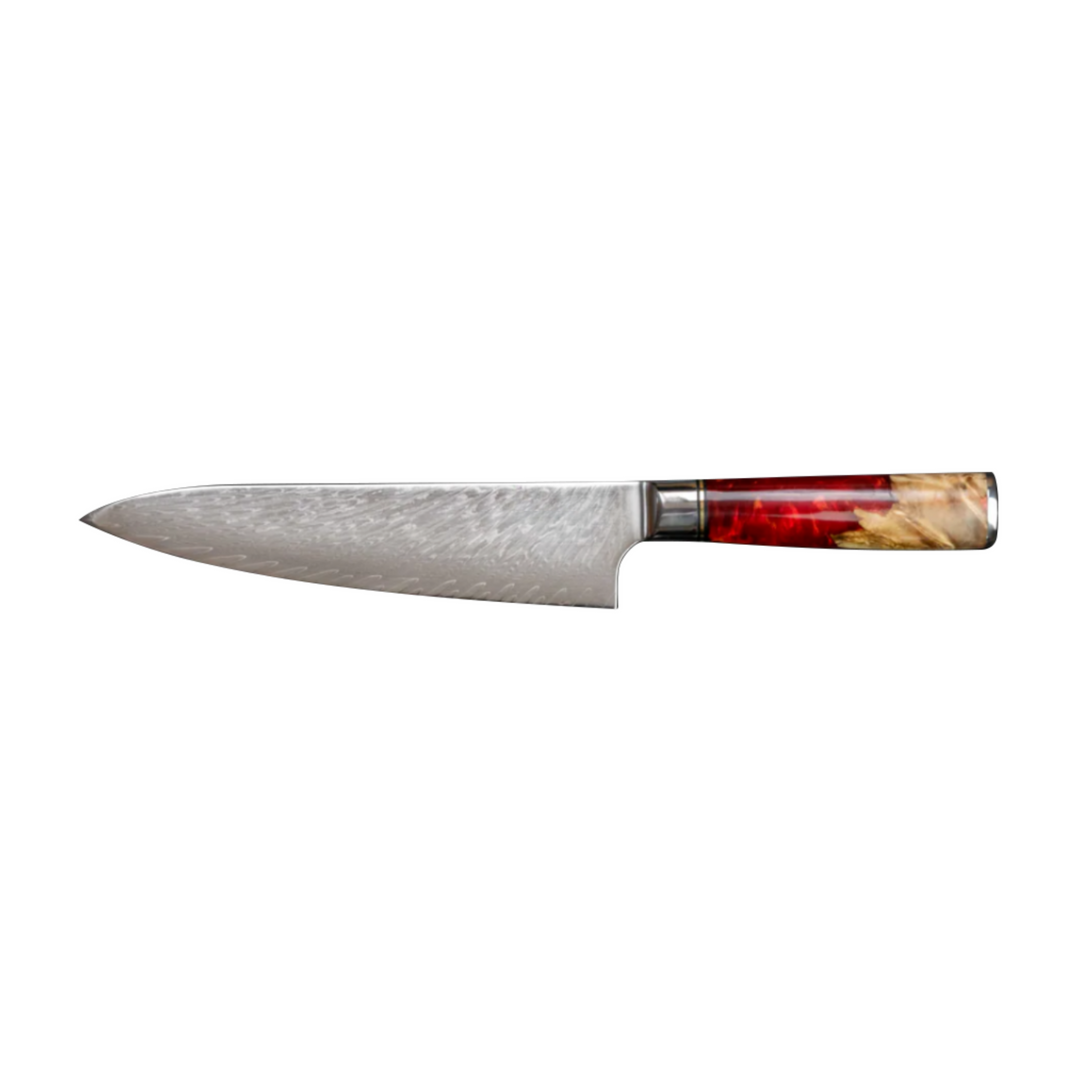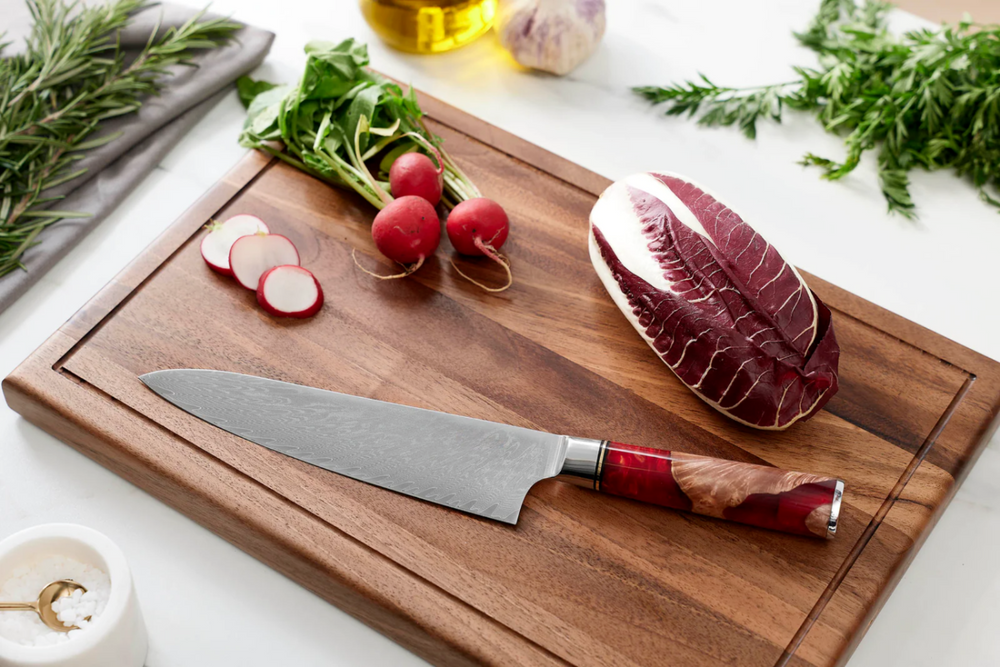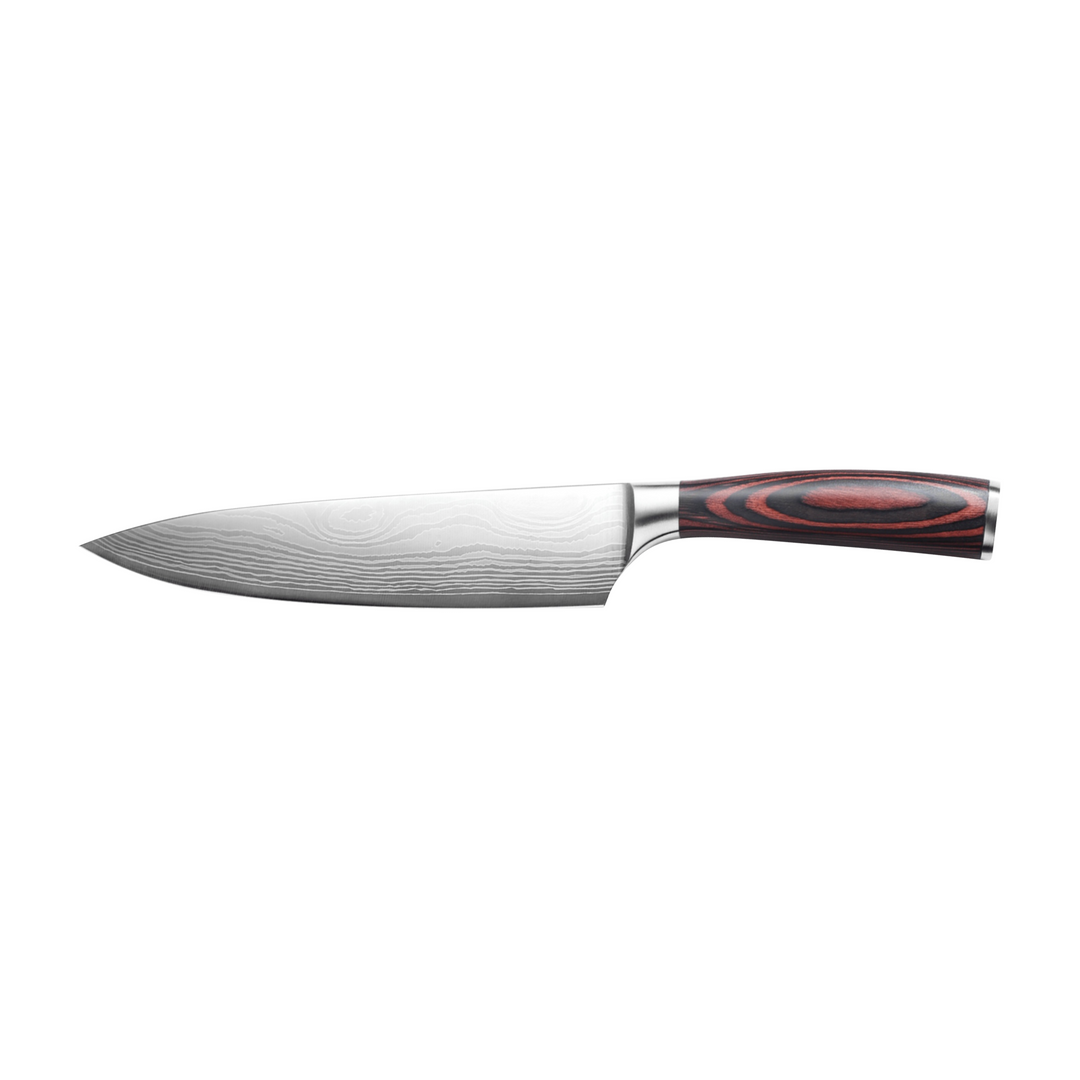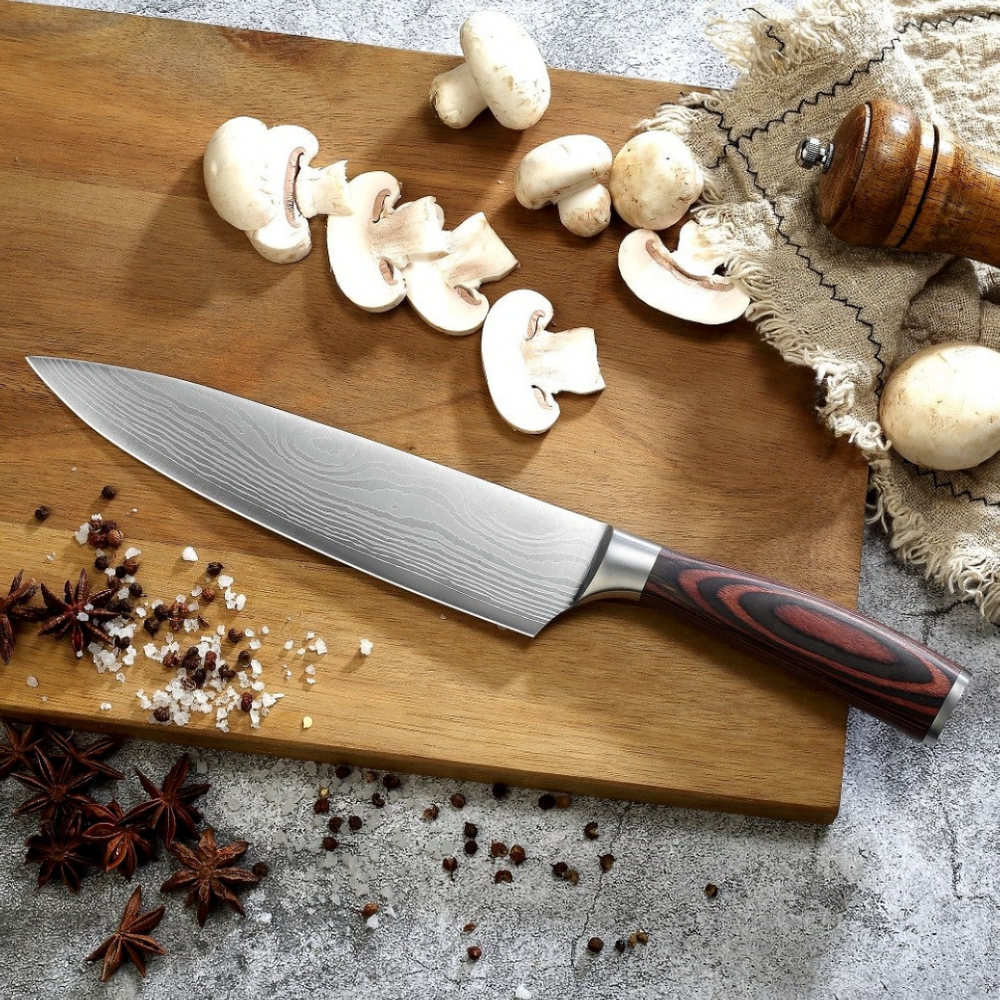BUY A CHEF'S KNIFE
Whether you're an amateur or professional chef, there comes a time when upgrading to a new chef's knife becomes essential. Dealing with old and dull knives can be frustrating, prompting the desire to reward yourself with a new tool. In this article, we aim to provide you with tips on purchasing a chef's knife to ensure you make the best possible decision.
WHAT ARE CHEF KNIVES USED FOR?
The chef's knife is the most utilized knife in European cuisine. Its long blade is ideal for swiftly chopping a variety of ingredients. The slightly curved blade allows for the "cradle cut" technique, while other cutting methods such as slicing or chopping are also easily executed with the chef's knife. Paired with a smaller all-purpose knife, the chef's knife is likely to become the most indispensable tool in your kitchen.
If you're considering purchasing both knives as a set, we recommend exploring one of our starter sets.
BUYING A DAMASCUS CHEF KNIFE
Similar to other knives, the steel of a chef's knife can be folded either singly or multiple times. When multiple layers of steel are used for the blade, it's referred to as Damascus steel. Damascus chef's knives are generally more expensive than monosteel chef's knives due to their more complex manufacturing process. However, the investment is worthwhile; the unique grain of the blades appeals to both hobbyists and professional chefs alike. To ensure every customer receives a personalized knife, we exclusively offer chef's knives made of damascus. Of course, monosteel blade options are also available. As long as high-quality steel is used, these knives should not be inferior to those made of Damascus steel.
SPOILT FOR CHOICE: CHEF'S KNIFE OR SANTOKU?
Our customers often wonder whether a chef's knife or Santoku is the right choice for them.
In essence, these knife types overlap in their applications. The Santoku is essentially the Japanese version of the chef's knife, but there are subtle differences. The Santoku features a wider blade, providing more space for transporting ingredients. Conversely, the chef's knife facilitates easier weighing of ingredients due to its curved blade. The choice between chef knives and Santoku depends on personal preferences, but in most cases, we recommend the chef's knife.
CARE FOR CHEF’S KNIVES PROPERLY
Caring for chef knives follows the same principles as caring for other high-quality knives. Nevertheless, we've summarized the essential steps for you:
HOW TO CLEAN A CHEF'S KNIFE IN 3 STEPS:
- Wash: If handling raw meat or fish, a drop of mild soap is recommended; otherwise, plain water suffices.
- Dry: Prevents rust formation; inhibits bacteria and germ growth.
- Apply a thin protective layer of oil: Preserves the blade and handle, reducing food sticking on the next use. Camellia oil is ideal for high-quality damascus chef knives.
SHARPENING:
With practice, sharpening a chef's knife is straightforward. We recommend using a water grinding stone and paying attention to the sharpening angle of the blade. Most Nakama knives have a sharpening angle of 8-15° instead of the more common 20°+ used by other manufacturers. It's advisable to practice on cheaper knives before sharpening high-quality ones.
STORAGE:
To preserve the sharpness and longevity of your chef's knife blade, proper storage is vital. We recommend using a knife block for optimal storage.
WHAT MAKES NAKAMA CHEF KNIVES SPECIAL?
Nakama chef knives are not only exceptionally durable tools that enhance your cooking experience but also elevate your kitchen's aesthetic. To add a personal touch, we offer engraving as an option, making it an ideal present. Order your own Nakama chef's knife online today.




